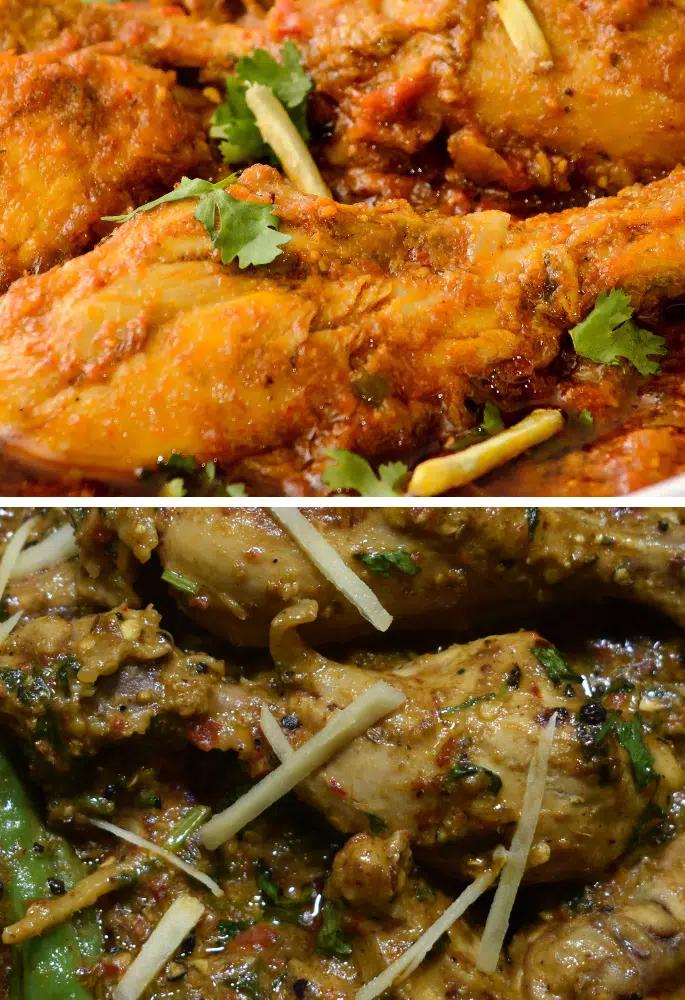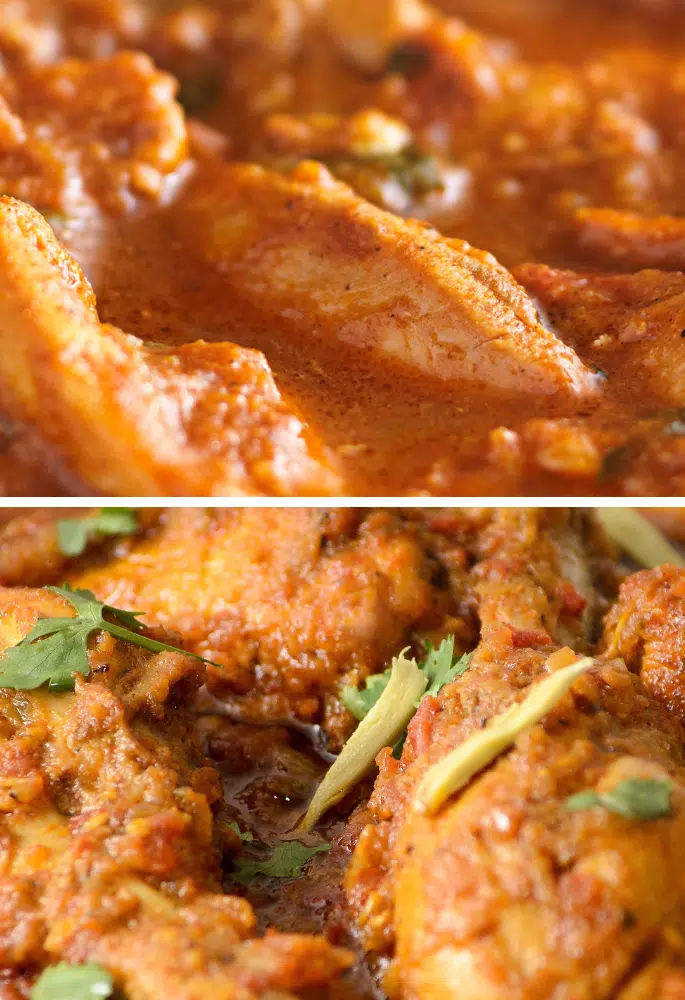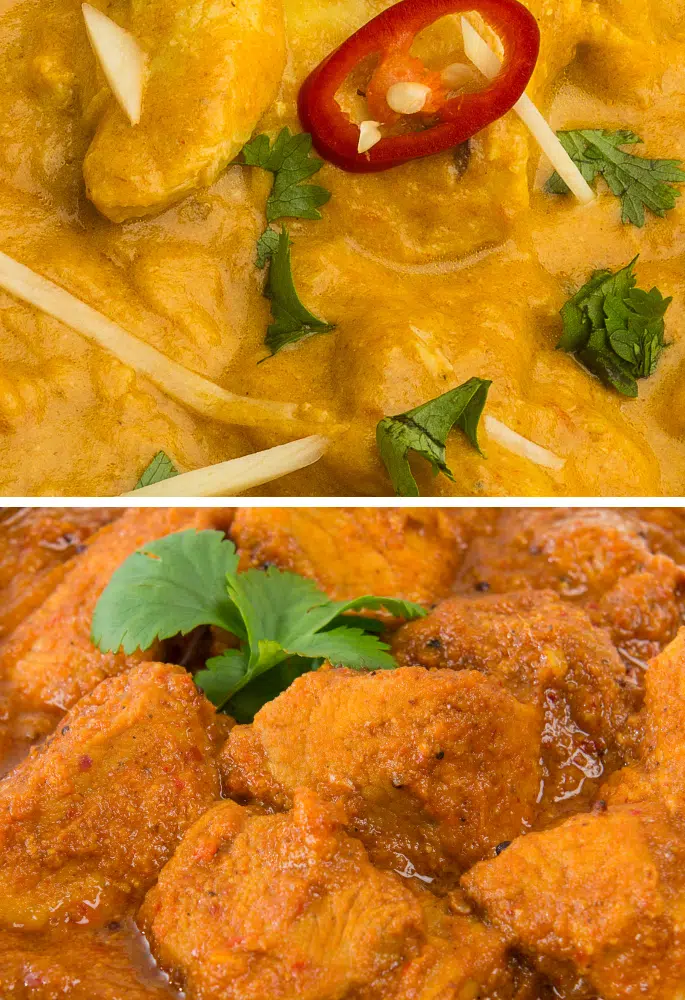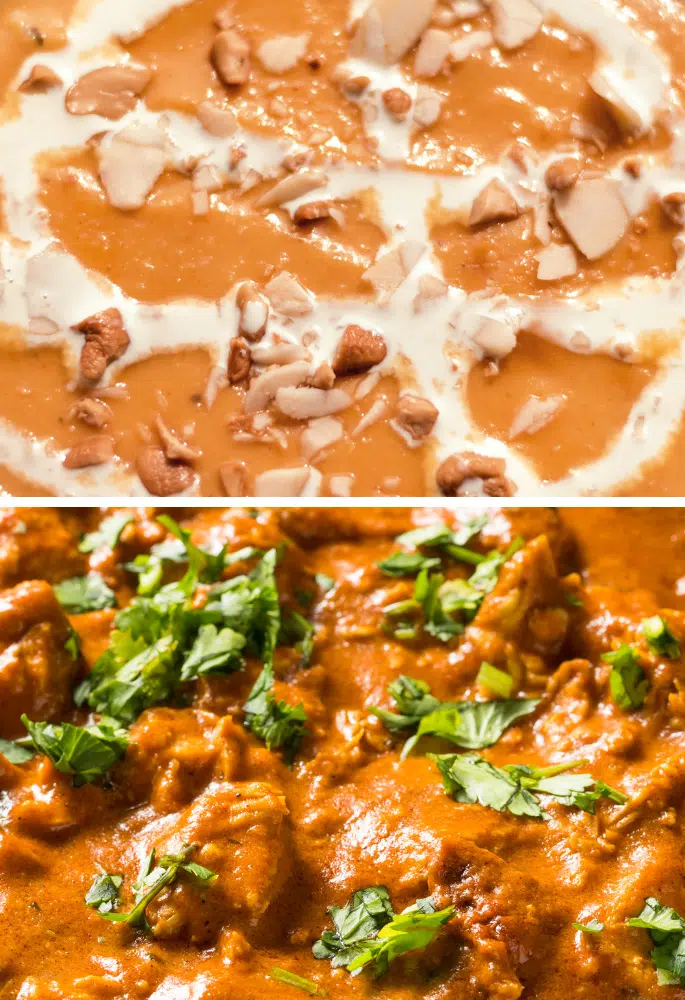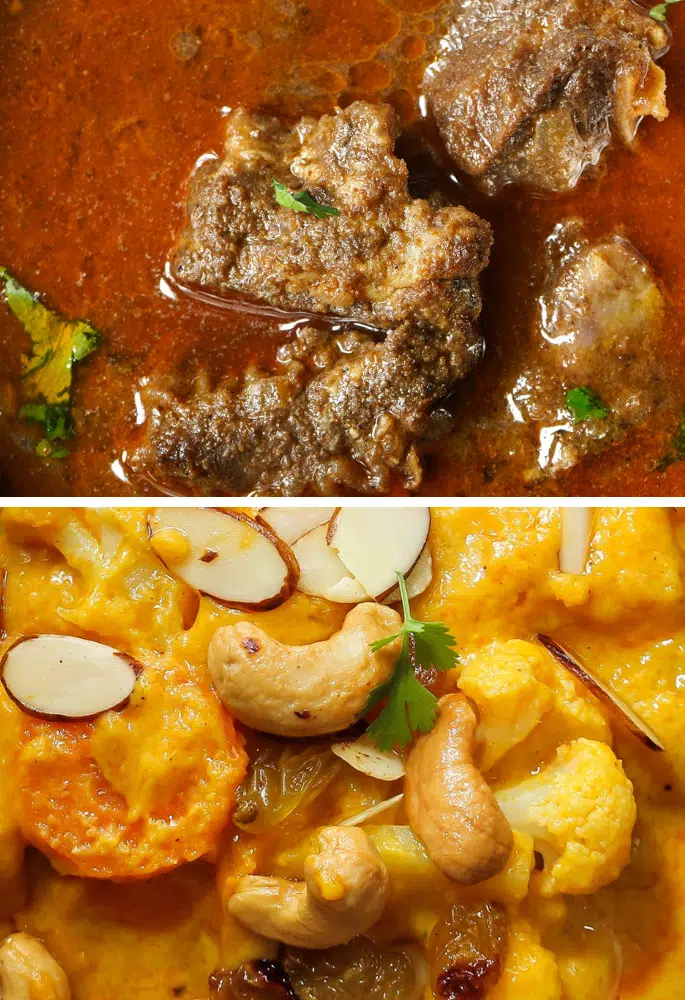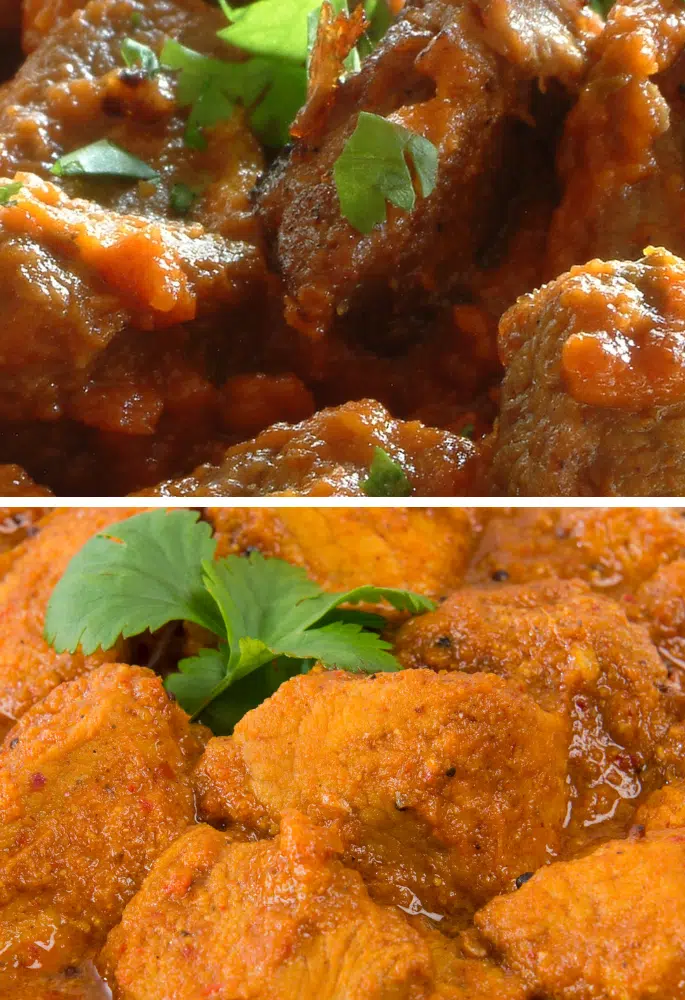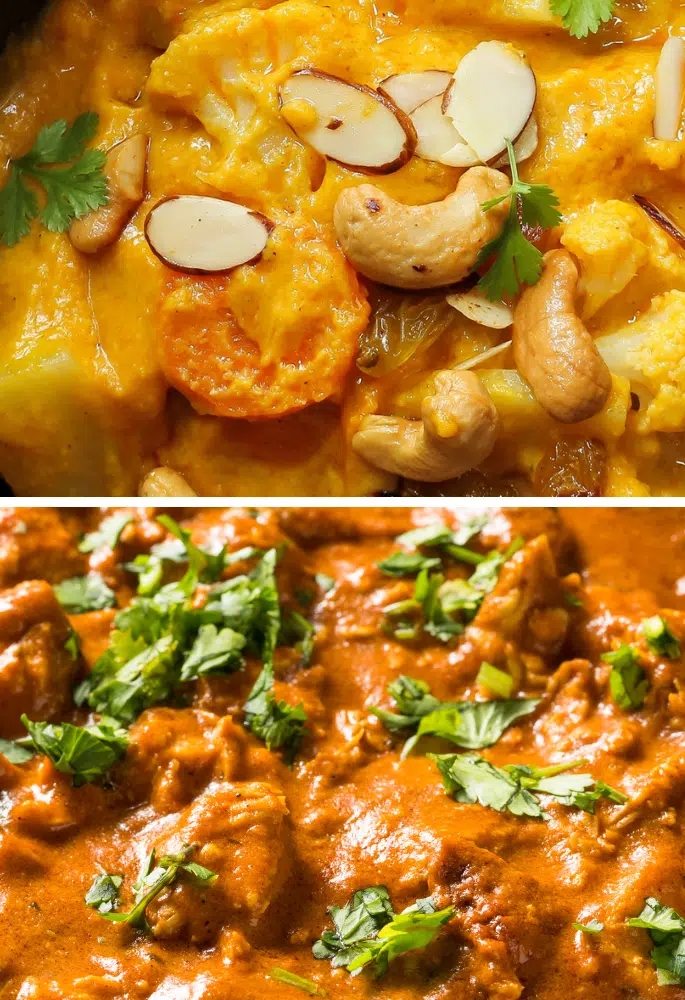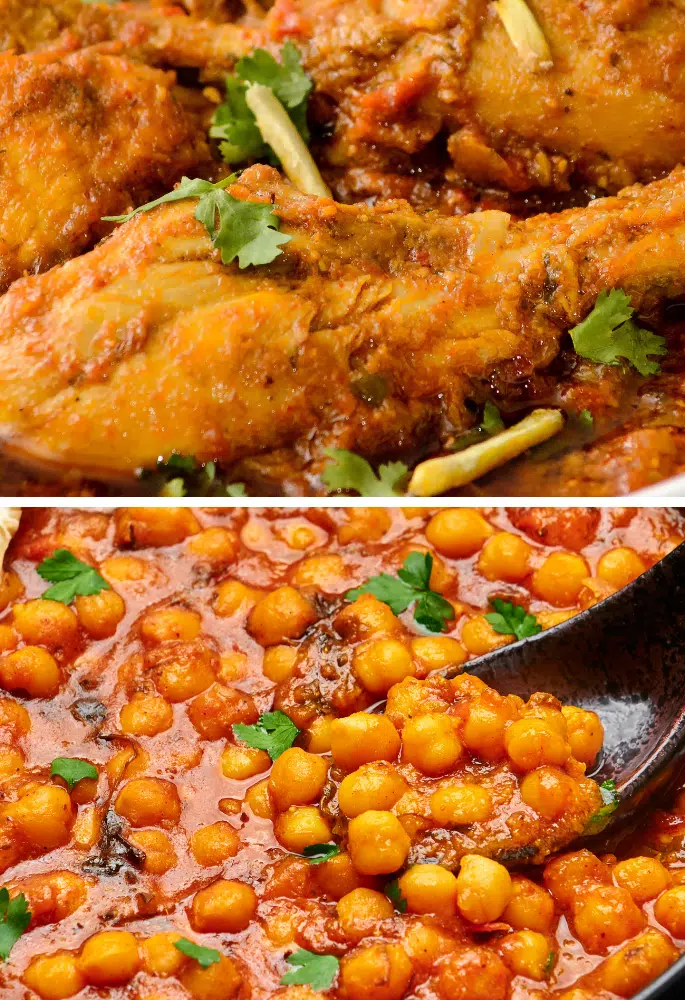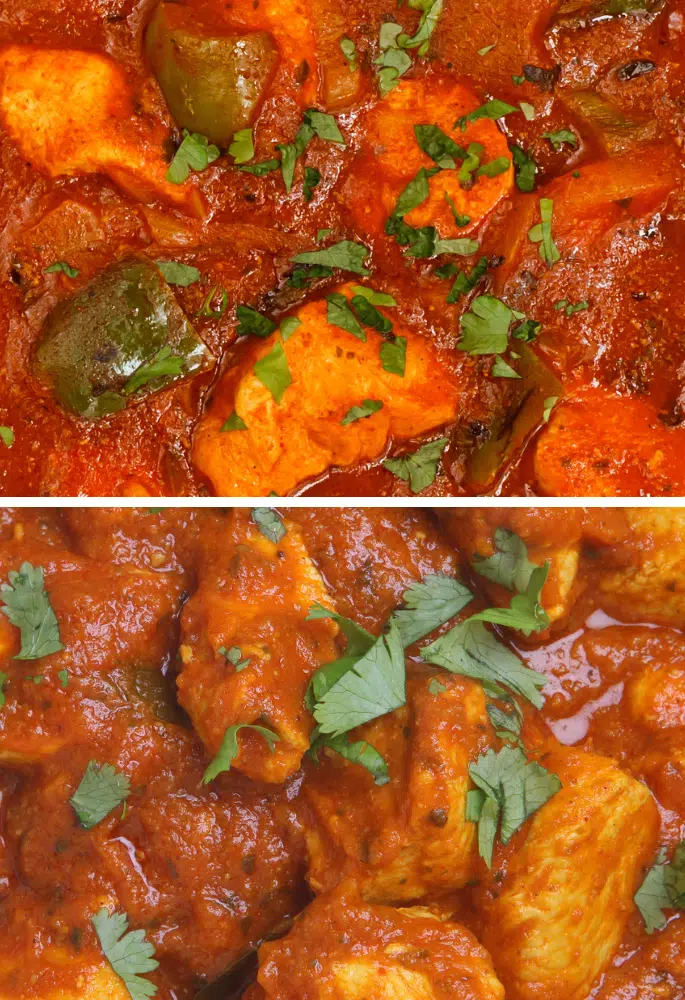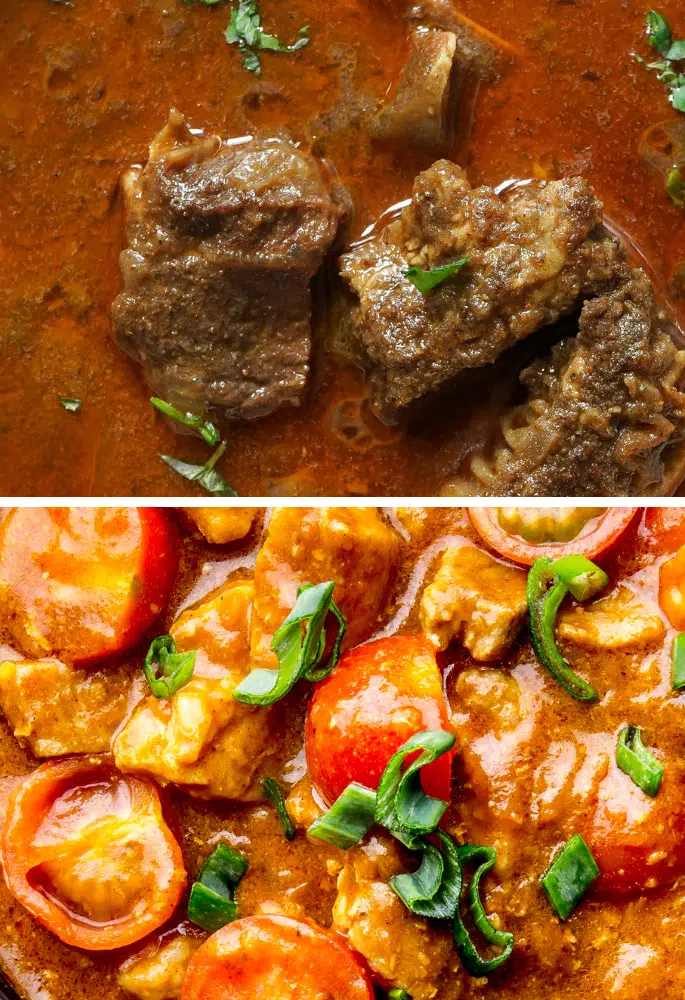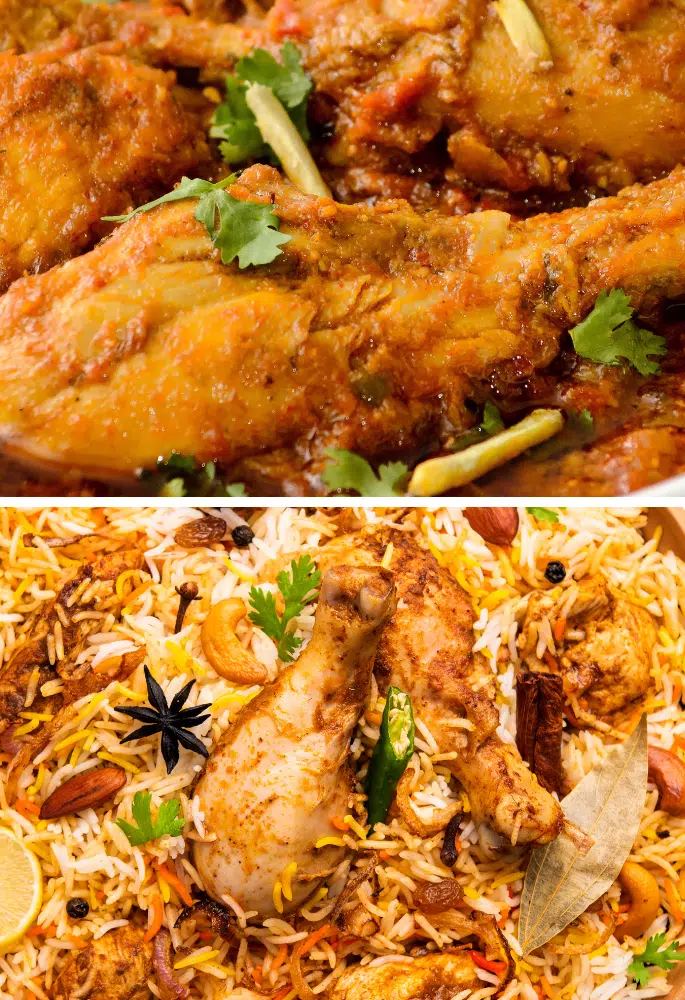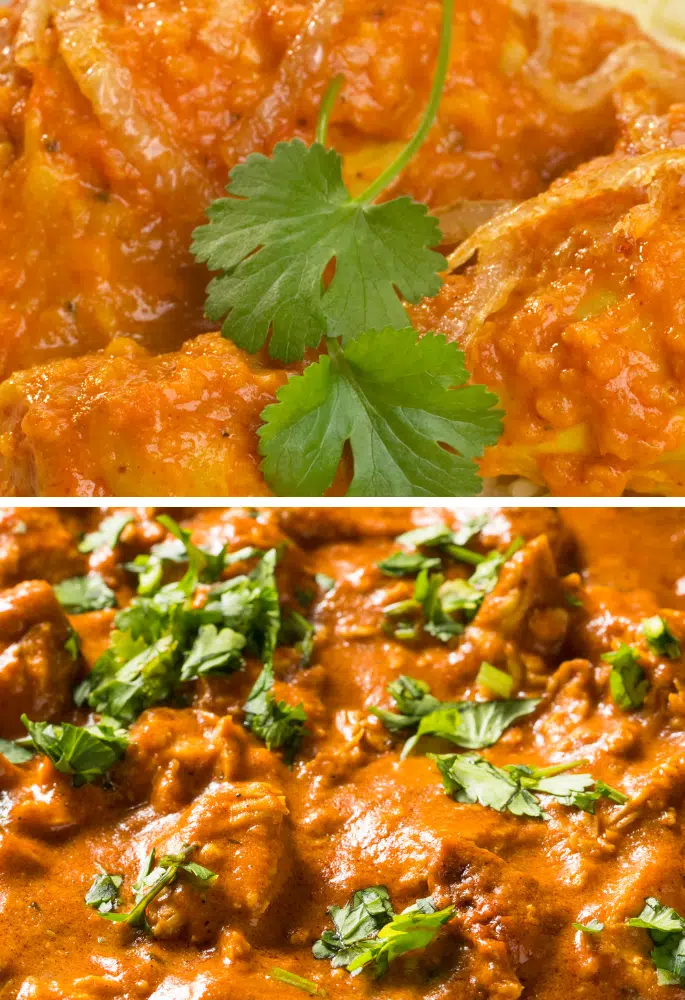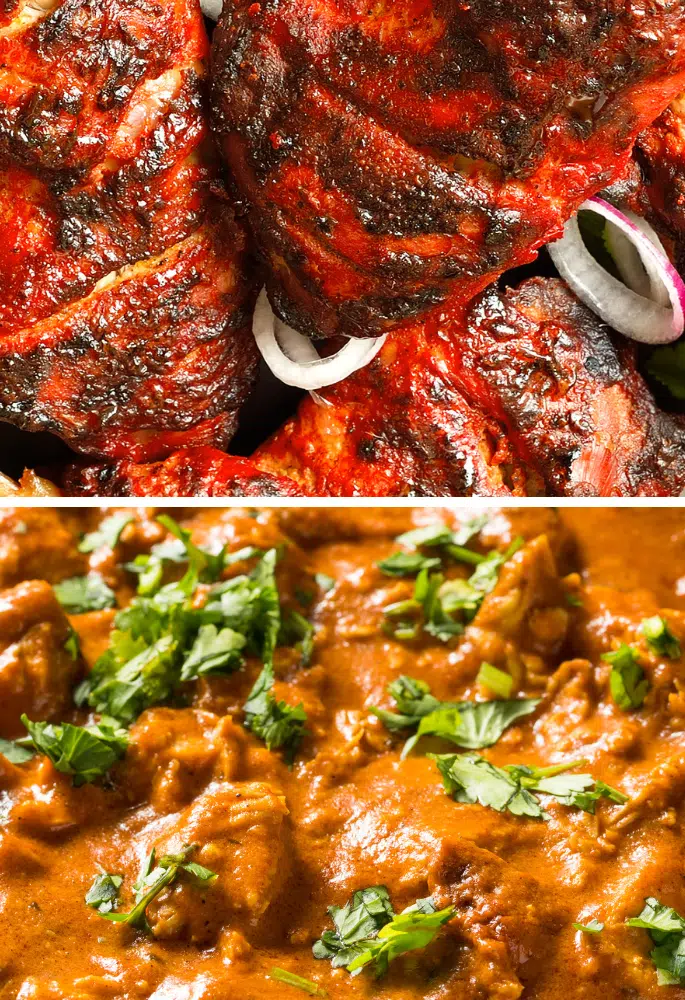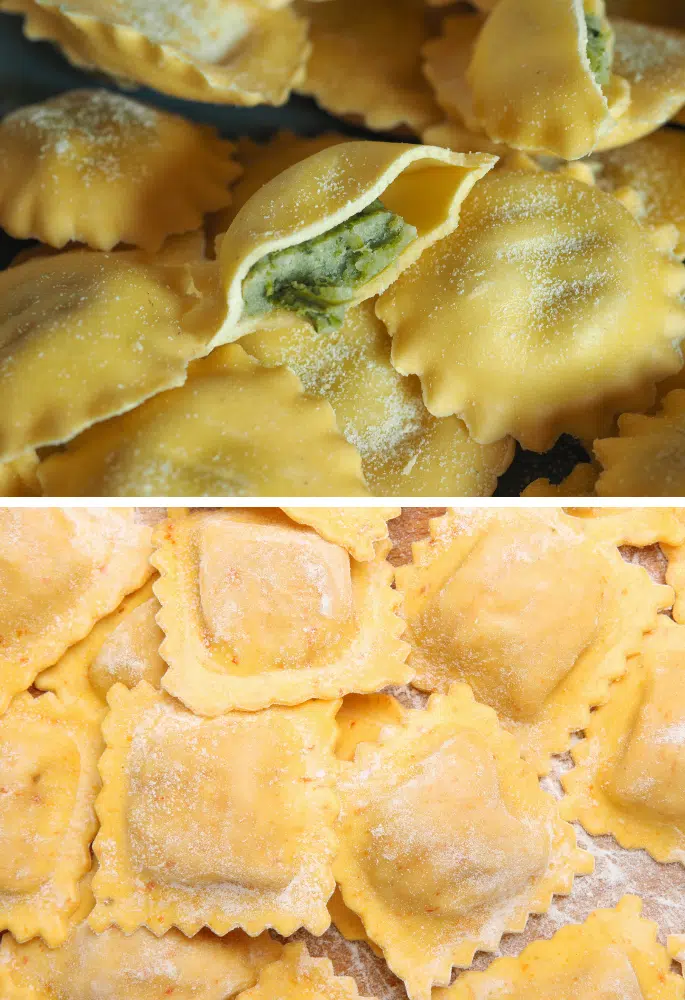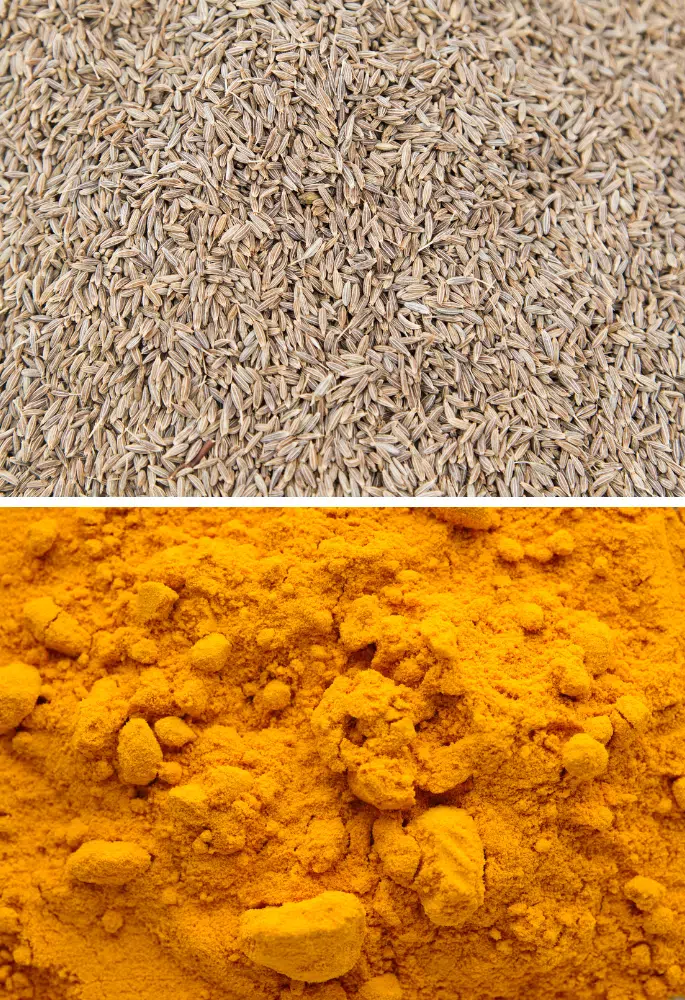Korma and tikka masala have got to be two of the most popular Indian dishes. But, how do they compare? They’re both pretty mild curries but is that the only similarity they share or are they actually very similar?
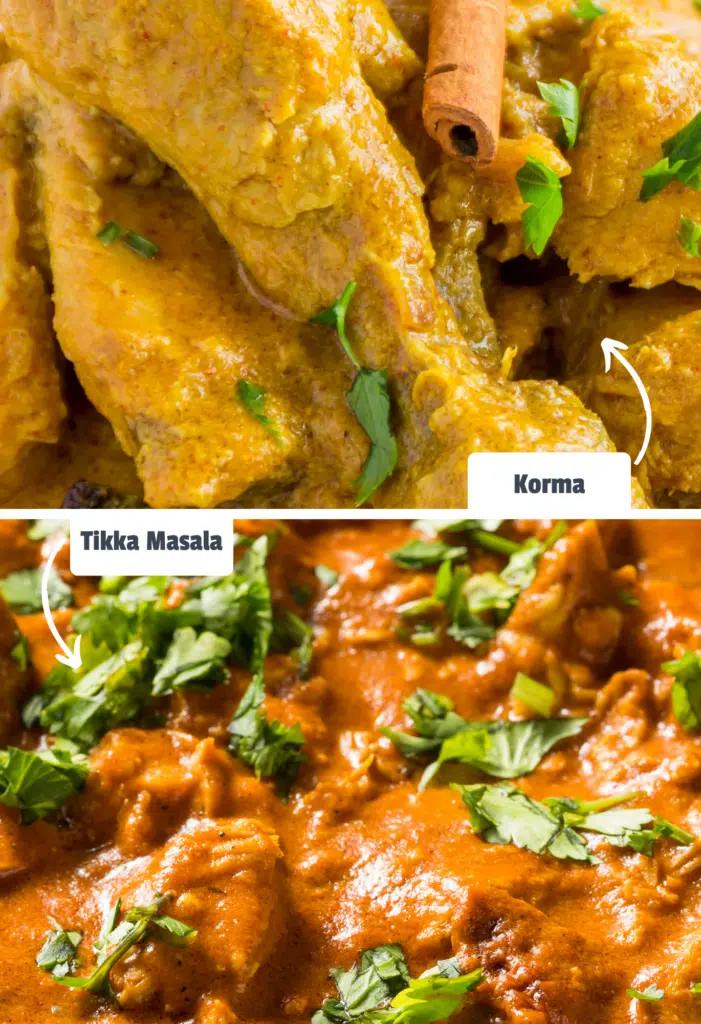
To someone outside Indian culture, korma and tikka masala may be mistaken for one another. However, there is a big difference in the flavours of the dishes, with korma being sweeter and tikka masala having a much earthier taste.
What is Korma?
Most unfamiliar with Indian cuisine will likely recognize korma as chicken korma, but korma actually refers to a specific cooking method used in Indian cuisine that can be applied to a range of proteins.
The process requires the meat of choice braised, traditionally in a mud pot over an outside mud stove.
Modern korma dishes differ worldwide, but all require the dishes’ protein to be quickly cooked and then left to slow cook in a creamy sauce. Some type of liquid needs to be added to keep the ingredients deliciously moist. In the UK and Northern India, yoghurt is used, while other Indian regions prefer some milk.
The result is a super thick sauce and tender vegetables and meat. Various spices varying from cumin to turmeric are added early on to allow the flavour to spread through the dish.
Korma is a rich and creamy curry with a blend of aromatic spices and yoghurt. It has a mild, slightly sweet flavour due to the addition of dried fruits and coconut. It is mildly spiced with little heat.
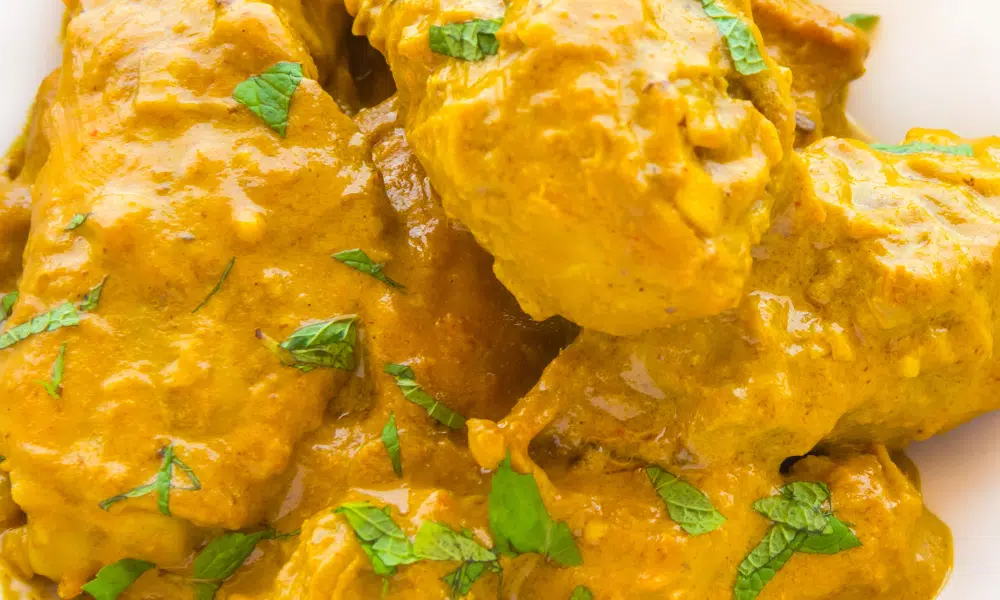
What is Tikka Masala?
Arguably, tikka masala is as British as it is South Asian to the point where some call it a completely inauthentic Indian dish. Regardless of authenticity, tikka masala embodies the flavours of Indian cuisine with little effort.
Many meats and vegetables can be used in tikka masala, from chicken to aubergine. So long as the protein pairs well with the acidity of tomatoes, then it is easy to use any protein you wish.
The tomato sauce base needs creaminess to offset the high acidity levels, which is where the thick yoghurt comes in.
As for the spices used in tikka masala, they veer towards a rich earthiness that is spicey enough to leave your tongue tingling without burning your mouth. These spices include turmeric, black pepper, ginger, and paprika.
Tikka masala–specifically chicken tikka masala–is thought to be derived from butter chicken. But butter chicken has much more sweetness and has to use chicken rather than the more versatile tikka masala.
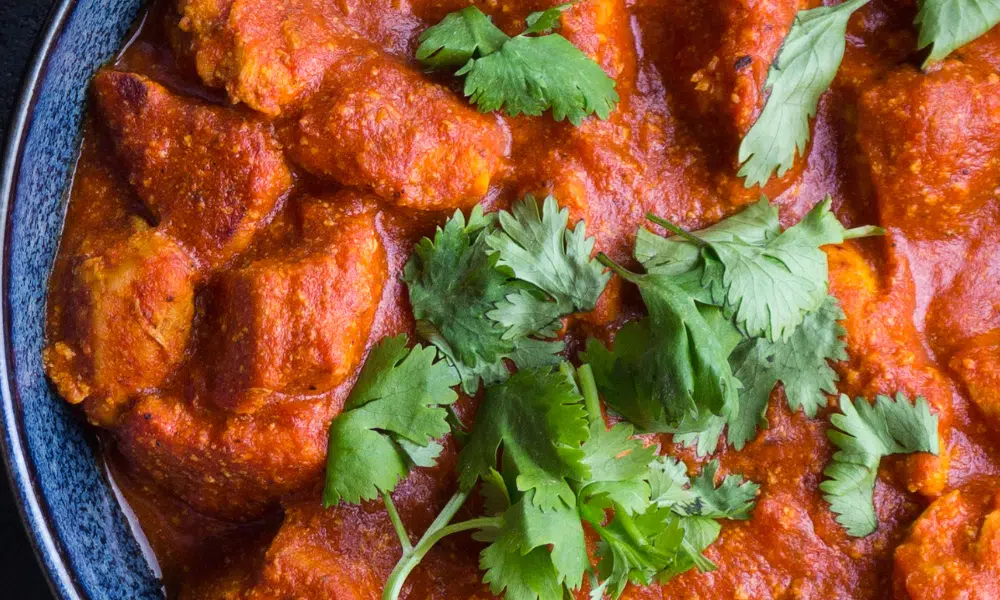
Similarities Between Korma and Tikka Masala
Unless you have been raised around Indian and South Asian cuisine, it can be easy to confuse two of the most popular Indian dishes in the Western world. Especially when those dishes have specific similarities such as:
- Chicken as a Common Protein: Both korma and tikka masala can feature a range of meats, vegetables, and proteins. Chicken has become most commonly associated with the dishes, especially in the Western world. Everyone will have their own variation of the dishes, but chicken is the go-to meat.
- Creamy Sauce: There are plenty of dishes in Indian cuisine that feature a thick, creamy sauce. Korma and tikka masala dishes luxuriate in that creaminess. The key is to let the protein slowly cook in the sauce to allow it to thicken naturally over time – a cooking method that korma and tikka masala both use.
- A Taste of India: The exact origins of tikka masala, in particular, are questioned often, but at the end of the day there is no denying the burst of Indian-inspired flavour you get when you first bite down into that rich, tomato sauce. In flavour, tikka masala and korma are Indian dishes through and through, even if they have been altered in the West to match Western preferences.
- Modern Cooking Practises: Korma as a cooking method has evolved and changed since its creation to make way for quicker and more modern cooking practices. Modern korma dishes are now cooked in the same way as tikka masala dishes. That is, by first cooking your protein of choice on high heat and then adding it to the assembled sauce to slow cook for an hour or so.
Differences Between Korma and Tikka Masala
For all their similarities, kormas and tikka masalas are different enough at their core that they should not be confused with one another. For example:
- Sauce Base: A tikka masala dish is built upon an acidic tomato base. The other ingredients used in the dish are used to balance out the tomato. A korma does not really have a consistent base ingredient like tikka masala, but the most commonly used is coconut milk or plain cream.
- Overall Taste: As you would expect, because the base ingredients used in a korma and tikka masala differ so much, their final tastes are also different. The coconut milk or cream that makes a korma is the counter opposite to the acidic earthiness of a tikka masala. True, tomatoes have some sweetness, but not enough to compare to a korma.
- Accompanying Dishes: The last thing you want to do is serve an overpowering side dish with a tikka masala when you have worked so hard to develop a rich, earthy taste. That is why tikka masala is mainly served with some plain rice. Korma is more robust in flavour, so it can pair with sweeter or more tangy side dishes.
Korma vs Tikka Masala: Which Wins?
If you’re forced to pick, which are you voting for? It’s time to put your mark against one in our ballot between korma vs tikka masala:
Do You Prefer Korma or Tikka Masala?
Acacia may be a freelance writer by day, but they are a food fanatic by night. They are always trying out new recipes or finding different ways to elevate classical dishes. But their biggest culinary aim is to educate others on the basics of the kitchen so that they too can enjoy delicious food.



